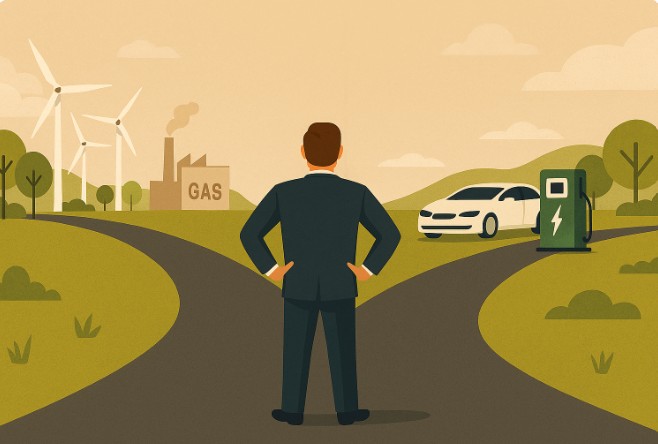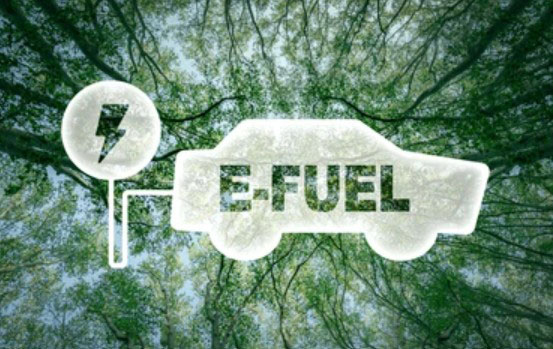March 15, 2022
Electrification is coming, but internal combustion engines will remain a large portion of the ground transportation fleet for many years to come – whether as typical ICE vehicles or used in hybrid vehicles. With that in mind, continued research and development with respect to improving the emissions profile and efficiency of the ICE engine is paramount.
Guest:
Graham Conway, Principal Engineer, Automotive Propulsion Systems Department
Transcript:
Speaker 1 (00:03):
Welcome to Carpool Chats. A podcast brought to you by the Transportation Energy Institute.
Jeff Hove (00:10):
Welcome everybody to Carpool chats. This is Jeff Hove. We are recording this session February 24th, 2022. And we’re just making a note because there’s plenty of things going on out there in the world. And we want to make a little footnote as to the day in which this is being recorded. So welcome everybody. And a big welcome to Graham Conway, principal engineer at Southwest Research Institute. Thank you for joining us Graham.
Graham Conway (00:41):
Hi Jeff, how’s it going? Pleasure to be here.
Jeff Hove (00:45):
Glad you could join us. And a quick shout out, thanks again for joining us during the last Fuels event, we had just a fantastic response from your talk in the panel that you were on. So again, thank you for taking part in that. So moving forward for this episode, we’re going to be speaking quite a bit on the future of the internal combustion engine. Where it’s going, what are we going to be foreseeing in the future as far as new technologies, new fuels. And of course this is all through the lens of reducing carbon emissions. So call it CO2 equivalent, GHGs also, making sure that we’re keeping an eye on the NOx and the particulates and everything else too. That’s important for immediate health risk stuff.
Jeff Hove (01:45):
But one of the things that we’ve been talking about at the Transportation Energy Institute quite a bit is this idea that we need to focus on reduced emissions and that yes, electrification is coming. And that is a big part of the solution. However, the legacy vehicles that are going to be on the road for decades come are still going to be emitting those emissions. So, what steps can we do in the light duty, in the medium and heavy duty realm, to curtail some of that to the best of our abilities? So Graham I’ll just open it up for what you’re seeing right now. Are there any new engine technologies that are coming out in the near future that you guys have been working on?
Graham Conway (02:40):
Yeah, so I think we’re definitely seeing a lot of movement in all of the automotive industry and the sectors at the moment. The light duty sector, the passenger cars that you and I would drive around, that’s maybe changing most rapidly. We’re seeing a big push towards electrification and hybridization as well. So some fully electric vehicles, lots of hybrids, starting to come out, manufacturers, making announcements that we’re going to be having more and more of these electric and electrified vehicles on the road in the future. And we’re certainly seeing those trends starting to pick up. It’s also clear for me that there’s still a lot of internal combustion engine vehicles being sold every year. And that those engines, when they go into these hybrid vehicles, they still turn on, they still burn fuel, they still produce emissions. And so we’re still working on reducing those emissions and the outlets.
Graham Conway (03:39):
And I guess the applications are changing and that is changing our strategy of how we’re optimizing these engines. Now that we know that these engines are going to be ending up in hybrid platforms that opens up some of the boundaries we’ve traditionally had when we’re designing and developing engines. And so now we’re able to optimize the engine to run in specific operating regions because it’s in a hybrid system. And that lets us push the optimization a little bit further and get a little bit more efficiency out, but also helps us to reduce the cost a little bit too. So it’s kind of a, win-win really. In terms of the technology, it doesn’t actually require many new groundbreaking technologies. It’s kind of optimizing the technologies we already know to give us something a little bit extra that we weren’t able to get a few years ago.
Jeff Hove (04:35):
Now, are you seeing that hybridization across all sectors from light duty, medium and heavy duty, or is the heavy duty mostly looking at ancillary devices on like the tractor trailer or other heavy duty equipments?
Graham Conway (04:51):
Yeah, so certainly for the main power train and the prime mover of the vehicle, the hybridization is coming in and the light duty sector much more rapidly than other sectors. The US is a little bit slower to adopt the hybrid technologies than some of the other areas of the world, such as Europe or China even. A lot of that’s driven down to the cost of fuel in the US, even though it’s going up, it’s still reasonably cheap. And so the consumer push for more fuel efficiency, isn’t there like it is in other countries.
Graham Conway (05:29):
So that’s why the hybrid uptake is a little bit slower than other areas, but it’s definitely more than in the medium duty or the heavy duty space. There’s hybrid systems coming out, maybe it’s for, as you say, the auxiliary parts of the vehicle, maybe the tailgate becomes electrified, maybe elements of the cabin become electrified. The hotel load starts to become even more electrified. The main propulsion systems, they’re still dominated by the internal combustion engine. Most of the energy and the power to move the vehicle forward, that’s coming from the internal combustion engine. And so you’re seeing a slightly different focus in the heavy duty space compared to the light duty space where people are still looking at what’s the next new technology I can put on the engine to make the engine better. As well as looking at different types of fuels that we could potentially used to lower the carbon footprint of the heavier duty vehicle segments.
Jeff Hove (06:30):
And we’re just now recently hearing about new engines and I’ll just throw a Cummins name there, right? Because they just announced their new engine that can use any type of fuel. And I’m not quite sure what any type of fuel means, but what I read was that Cummins was looking at… This is our last internal combustion engine. And moving forward, we’re going to be making more of a switch to, I assume, electric or hydrogen. And so we’re seeing a lot of this new technology still coming out. And of course that’s then the kind of the crossover to, how do we reduce the carbon intensity of the actual fuel? If we’ve gone so far with injector systems and other efficiencies in the combustion engine itself, we’re really left with the fuel that we’re burning. Or then there is the other topic that gets tossed around a lot. And that’s carbon capture, at the vehicle, which… Is that a very real viable option? I mean for heavy duty trucks?
Graham Conway (07:52):
Yeah, so there’s a lot of good technologies. We touched on there certainly making an engine, just starting the design of an engine from a blank piece of paper through to the actual production manufacturer. That engine is a very intensive task. Requires a lot of people, requires a lot of energy, a lot of resources to make that happen. And obviously now the budgets have shifted maybe it’s not all just focused on internal combustions anymore. We have to look at fuel cells, we have to look at battery electric vehicle solutions.
Graham Conway (08:32):
And so the available resources to just continue to churn out new engine designs, it’s just not there. And so I think that’s why we’re seeing a lot of announces of this will be our last engine. Just because creating new manufacturing lines, putting all the effort in to do it. You don’t want to be doing that every few years now, if you’re also having to work on new battery packs and new fuel cells. When you want to be spending a lot of money in those areas, it’s because you don’t want to be left behind in the areas of fuel cells and battery electric vehicles when they start to ramp up.
Graham Conway (09:07):
And so I think that’s why we’re seeing a bit of a pull back on the fundamental research and the new engine designs, but then with this research going on, especially on the new fuels. As you mentioned, there things like hydrogen combustion, whether you use the hydrogen in a fuel cell or you burn it in the engine, there’s some pros and cons of doing either one of those, either from a emissions point of view or a techno economic point of view. There’s reason you’d want to do both of those. And so it definitely makes sense if you’re designing your last generation of engine, you kind of wanted to be fuel agnostic and to be able to run multiple different fuels, with just maybe some small hardware sets. Maybe a different injector set, maybe a different calibration on that rather than having to completely have a different engine for every fuel that’s out there.
Graham Conway (09:58):
And so that makes perfect sense to me to do that. For the carbon capture, that is really a hard topic at the moment for many people in the industry. You’ve got the one option, which is use a fuel that has less carbon, so you don’t produce the CO2 to begin with. And then you’ve got the other option, which as well… Maybe you use a fuel that produces CO2 for whatever you can capture it and store it on board and then not release it in the atmosphere. And there’s pros and cons of those strategies as well. Technically it’s absolutely possible to abstract the CO2 from the exhaust stream. There’s membrane technology to do this either chemically driven membranes or what you would think of more of a diffusion based or a Civ to filter out the CO2. Those are all options.
Graham Conway (10:57):
The big question is you’ve taken the CO2 out, now what do you do with it? And that’s kind of the point that people are still discussing. What makes the most sense to do with the CO2? And I think once we can answer that, if there’s a place for the CO2 to go, then I think there’s a chance with the CO2 capture coming on board. We just have to answer those downstream questions first.
Jeff Hove (11:27):
Are you hearing… I keep thinking under this administration, with this infrastructure bill, with this Uber consciousness on climate change and green house gases. I mean, because carbon capture is not a new concept, but are you seeing, under this administration a lot more chatter on topics like that? And I think hydrogen kind of falls into that play too, right? Where it’s not always cost effective, but… And we’ve got infrastructure issues on moving it around the country and what’s the energy content of it? But now all of these things that have been out there from a technology standpoint and you’ve probably known about for 10 plus years. But they kind of fell by the wayside because they were cost prohibitive or to your great point, it takes a lot to build an engine from ground up to manufacturing and mass marketing. Is there anything else out there that you’re starting to see people really talk about and get sincere about? Maybe it’s been on the table for a number of years and now under this environment, it’s starting to make sense?
Graham Conway (12:47):
Yeah, so I think in terms of the technologies, there’s always the radical engine design. There’s always the interesting, but maybe not yet proven at scale technology you can put on the engine. There’s always the next fuel, a low carbon fuel, there’s lower particular emissions using this fuel. I think the thing we’re seeing more of now, that’s not a technology to improve the efficiency is the methodology to help us understand which way we should go. And that’s the lifecycle analysis component that the industry is now starting to really look at seriously. And another, the fuels Institute released that very nice paper study looking at some of these aspects recently. And that’s really something that I personally am working on a lot. Let’s, understand how we’re measuring things first. Then we’ll have something we can use to go and look at these technologies objectively and use the data to drive where we think we should go for of the best result if the objective is lowering CO2.
Graham Conway (14:00):
And then the final answer after that is how do we pay for it on an individual vehicle basis? How do we pay for the infrastructure to make that fuel source or energy source viable at mass scale? And so maybe it’s not a specific technology we’re looking at, but certainly the lifecycle analysis. How are we measuring things? How are we making sure this is right? How are we making sure our lifecycle analysis models keep up with a very rapidly changing electricity grid? How are they changing up with advancements in battery technologies, which are lowering the CO2 footprint for the battery production? That’s really where I think a lot of the interest is right now out to really help us understand what we should do next.
Jeff Hove (14:44):
So yes, the fuels Institute did just put out that paper on life cycle analysis. And I think it’s very… I like it of course it came from our office. But at the same time, you just contributed to another large piece of work too, where you were a primary author on a whole chapter. And I apologize, but the name of the book is… Can you share the name of the book while we’re recording?
Graham Conway (15:10):
Yeah, it’s Engines and Fuels for Future Transportation.
Jeff Hove (15:14):
Engine in fuels for future transportation. Yep, so if anybody gets a chance, look up, Graham’s work on that. It’s very detailed. Its an excellent book from front to cover, but specifically Graham’s chapter that’s chapter six on life cycle at Allison. So, yeah-
Graham Conway (15:36):
Yeah, That’s good.
Jeff Hove (15:38):
… Very good. Well, Graham, thank you for taking the time. And I know we’re going to be having a lot more of these discussions. We have our next event, assuming this recording goes up before that it’s going to be in May in Indianapolis. So now I just absolutely timestamped this recording, but we have our next fuels event and a medium and heavy duty decarbonization is really going to be on the agenda along with our EV council and a number of other topics and transportation and fuels. So I’m really looking forward to that. We’re going to be talking about all of these things and hopefully you can join us for that event as well. And we would love to have you any parting words?
Graham Conway (16:29):
No, I definitely hope to be there. I’ll put it on my calendar. It was an excellent event last time down in Dallas. My parting words, there’s a lot of information out there. Sometimes it’s difficult to judge what is and what isn’t right, what the motivations are behind certain publications, certain statements. It’s a real mind field out there. So trust your judgment, try and use science to make the conclusion sound and [inaudible 00:17:02] ourselves. Feel free to contact me. And I’m always happy to give an unbiased opinion.
Jeff Hove (17:09):
And of course the Transportation Energy Institute loves your science based approach to everything and the work that you guys do there. So again, thanks for spending some time with us today and I look forward to seeing you real soon.





